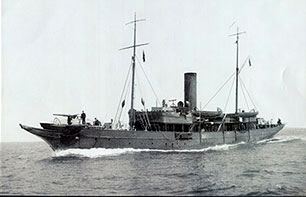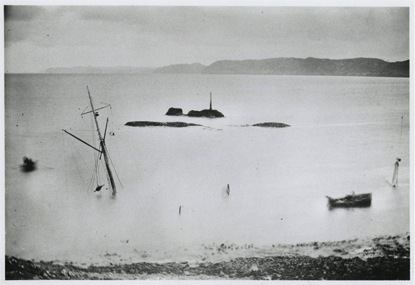Name Iolaire Class and type Yacht | Builder Ferguson Shipbuilders | |
 | ||
Fate Wrecked, 1 January 1919 | ||
Hmy iolaire the final voyage
His Majesty's Yacht Iolaire (Scottish Gaelic: Eagle, pronounced [ˈjulˠ̪ɪðə] in Gaelic, varying slightly according to dialect; the English-speaking crew used a spelling pronunciation of /ˈaɪ.əlɛər/ and this was adopted by Gaelic-speakers) was the Admiralty yacht Amalthaea of 1881, renamed in 1918, whose sinking on the 1 January 1919 in the Minch was one of the worst maritime disasters in United Kingdom waters during the 20th century. At least 205 men perished of the 280 aboard.
Contents

Sinking

Iolaire was carrying sailors who had fought in the First World War back to the Scottish island of Lewis in the Outer Hebrides. She left the port of Kyle of Lochalsh on the mainland late on the evening of the 31 December 1918. At 2:30 a.m. on New Year's Day, as the ship approached the port of Stornoway, a few yards offshore and a mile away from the safety of Stornoway Harbour, she hit the infamous rocks "The Beasts of Holm" and sank. The death toll was officially put at 205, of whom 181 men were islanders but as the ship was badly overcrowded and there was a lack of proper records, the toll could have been slightly higher. John F. Macleod from Ness, Isle of Lewis, saved 40 lives, swimming ashore with a heaving line, along which many of the survivors made their way to safety. Only 75 of the 280 (officially known) passengers survived the disaster; 73 percent of the people on the yacht perished in the incident.
The sailors were wearing their uniforms including heavy boots, which made swimming from the wreck difficult — indeed many men of that time had never had the opportunity to learn. Many songs and poems, such as An Iolaire, describe the women of these men finding their men washed up on the shore the next day. The sinking is the worst maritime disaster (for loss of life) in United Kingdom waters in peacetime, since the wreck of the SS Norge off Rockall in 1904 and the worst peacetime disaster involving a British ship since the Titanic on 15 April 1912.

An Admiralty enquiry found no satisfactory explanation for the disaster. Its inconclusive findings generated much ill feeling amongst the Lewis population, amidst accusations of a "whitewash". While drunkenness among the crew was discounted at the enquiry, the vessel was sailing at night, in poor visibility and in deteriorating weather. The entrance to Stornoway harbour is not the most straightforward of navigations and it is possible that navigational error was to blame. This hypothesis appears to be supported by the crew of a fishing vessel who noted that the Iolaire was not navigating the correct course for entering the harbour.
A memorial was erected in 1958 at Holm, outside Stornoway. A stone pillar sticks out of the water at the site of the wreck, which can be seen to starboard as the car ferry approaches the harbour entrance.
